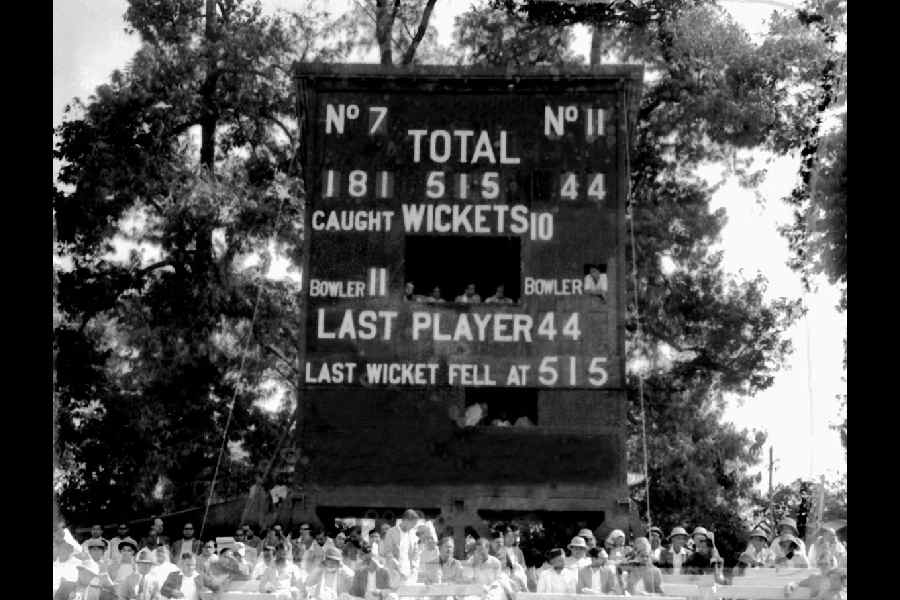As India starts a new T20 and ODI tour Down Under, I realise that I have been following cricket for around 54 years now, starting with India’s memorable tour of the West Indies in 1971. I grew up in the mofussil, and till I first watched India versus Pakistan on a neighbour’s grainy, black-and-white television set in 1978, I never knew that the game was played at both ends of the pitch. Still, those were primarily radio days, and most of the cricket I came to enjoy back then was only through the voices of Dicky Rutnagur, Anant Setalvad, Narottam Puri, and — for the Calcutta matches — the trio of Ajay Basu, Pushpen Sarkar, and Kamal Bhattacharya. Commentators, especially in Bengali, could sometimes lapse into an emotional brain freeze: Bhattacharya exulted, during a charged moment of the India-West Indies Test at the Eden Gardens in 1974 — “Here’s Bedi, over the wicket to Lloyd… Oh, awesome (Opurbo)! Just awesome! Ajay, do you remember 1966? ….” — leaving listeners fuming through a few expletive-laden minutes wondering what had happened.
Back then, I read my first cricket books in Bengali by the literary scholar, Sankari Prasad Basu, and my first cricket reportage in Bengali by the author-journalist, Moti Nandi. Both were cricket romantics, writing with a flavour of lyric poetry, especially when depicting the 1960-61 ‘tie Test’ series between Australia and the West Indies or G.R. Vishwanath’s match-turning knocks against the West Indies in 1974-75. They were both acolytes of the celebrated British cricket writer, Neville Cardus, known for skipping matches for which he rustled up gloriously lyrical reports! Under their influence, I gravitated towards a sort of cricket fandom where — as Cardus famously said — “the scoreboard is an ass” and true appreciation hinged on other factors, primarily non-statistical in nature.
Yet, I was also fascinated by scores and averages, so much so that during a trip to the National Library in the 1980s as an undergrad looking for books on medieval European history, I was led astray by the irresistible charms of The Wisden Book of Test Cricket, with its 800 pages of scorecards of 100 years of Test matches. Over time, books with more practical and hard-headed insights began to cast a shadow on my cricket ‘romanticism.’ Sir Don Bradman’s The Art of Cricket was perhaps the first such book, from which I still remember two things — one, detailed illustrations of cross-sections of the ball, explaining the aerodynamics of swing bowling; and, two, a close analysis, with graphics, of various arcs and speeds of balls thrown by the fielder from the boundary line. The Don’s approach was fundamentally different from a delectable book by another contemporary, Jack Fingleton, whose Masters of Cricket, a wonderful tribute to many greats, was essentially a collection of stories about cricketers rather than an analytical essment of their skills. Typically, his delightful opening chapter, “Never Another Like Victor”, was on Victor Trumper, whom Fingleton had never seen play. Yet, he talked about his “dazzling footwork and miraculous strokeplay”. Not very far removed from Cardus!
Much later, I read Mike Brearley’s professed ‘treatise’ on leadership, The Art of Captaincy. Brearley was known as an outstanding captain, and since his Test batting average was less than 23, he must have played on the merit of his leadership skills alone. The book offered interesting insights into the psychology of leadership in cricket, with detailed discussions of bowling changes, man-management, and so on. However, I found it to be lacking the kind of technical deep-dive that Bradman undertook. A later discovery, John Buchanan’s If Better is Possible (2008) — touted on the cover as “the winning strategies from the coach of Australia’s most successful cricket team” — was deeply disappointing, primarily because of its tone of a largely vacuous self-help book offering homilies.
I have started wondering if the data analytics revolution that has transformed cricket’s statistical landscape has deepened my appreciation for its finer nuances and complexities, especially in Test cricket. Undoubtedly, it has helped me look beyond the timeless abstractions of uncontextualised scorecards. I am, of course, a general enthusiast looking to enjoy the game, so I am not looking into analytics to identify subtle patterns like a batter’s declining performance against a left-arm seamer’s inswingers, like coaches do to strategise about opponents’ weaknesses. As an amateur fan, I am also shy of the hardcore stuff, such as strange-sounding programming packages and computational tools available for data analytics in cricket, like yorkR, CricketR, cricketdata, or howzatR.
However, I am happy to enjoy the data-driven broadcast and commentary — if they are by real people and not by ‘text-clustering’ generative AI — as started on some platforms, seeking to bridge the gap between professional analysis and fan understanding. Bowling pitch maps and batting wagon wheels have, of course, been there for a long time, but the availability of detailed ball-by-ball data has made the game more accessible for somebody like me, an occasional prowler on websites like ESPNcricinfo’s Statsguru and CricViz. And who can deny me the pleasures of pondering some critical existential questions? Which milestone have India’s Test batters attained 33 times that Sachin Tendulkar never has? Was Virat Kohli better against spin or pace in the third innings? How often did Jimmy Anderson take a wicket in his first spell with the new ball in overcast conditions? How would have a 1970s spinner like, say, Derek Underwood, fared on modern, batting-friendly tracks? How many more sixes has Shafali Verma hit in her short career than any other in women’s Test cricket?
My understanding of and appreciation for the game are now enriched by some new light that data shed on personal favourites. I was a huge fan of the flair and the chutzpah of Mohammad Azharuddin and Virender Sehwag, and though they had scored some of their most incandescent centuries in ‘away’ Tests — Azharuddin, for instance, at Lord’s in 1990 and Cape Town in 1997, and Sehwag at Melbourne in 2003 — I can no longer ignore the fact that their averages in the challenging SENA (South Africa, England, New Zealand, and Australia) Test venues are just above 31 and 32, respectively.
On the first day of the 2019 Ashes Test at Headingly — known for Ben Stokes’s match-winning, reality-defying innings of 135 — David Warner smashed 61 off 94 balls, a typically exciting Warner innings I saw live on television. Later, I came to learn from a CricViz story that Warner’s innings included 35 ‘false shots’, about one every 2.7 balls. I also read that normally, a batsman is dismissed approximately every 12 false shots. So — in a world of probabilistic perfection — Warner should have been dismissed around three times. By contrast, as ESPNCricinfo revealed recently, K.L. Rahul has been much unluckier than most of his contemporary batters. For, as it turns out, out of the batters who had offered 30 or more catches since 2020, most had a lower percentage of catches held than Rahul, who was dismissed every 11.67 mistakes during this time.
But even the most powerful statistical tools cannot penetrate the layers of drama involved in Test cricket — the camaraderie, the confrontationality, the adrenaline, the high fives, the sledges, the airplane celebrations, and also the occasional guards of honour to opposition players! ‘Control percentage’ may indicate how efficient a batter is but offers no clue as to who is the easiest on the eye.
So, purely on the pleasure principle, I will go with Sehwag any day and leave his SENA record to the mean and miserly nitpickers. And in my own Idiot’s Guide to enjoying Test cricket, the scoreboard will remain an ass till the cows come home.
Jayanta Sengupta is Director, Alipore Museum; jsengupt@gmail.com











